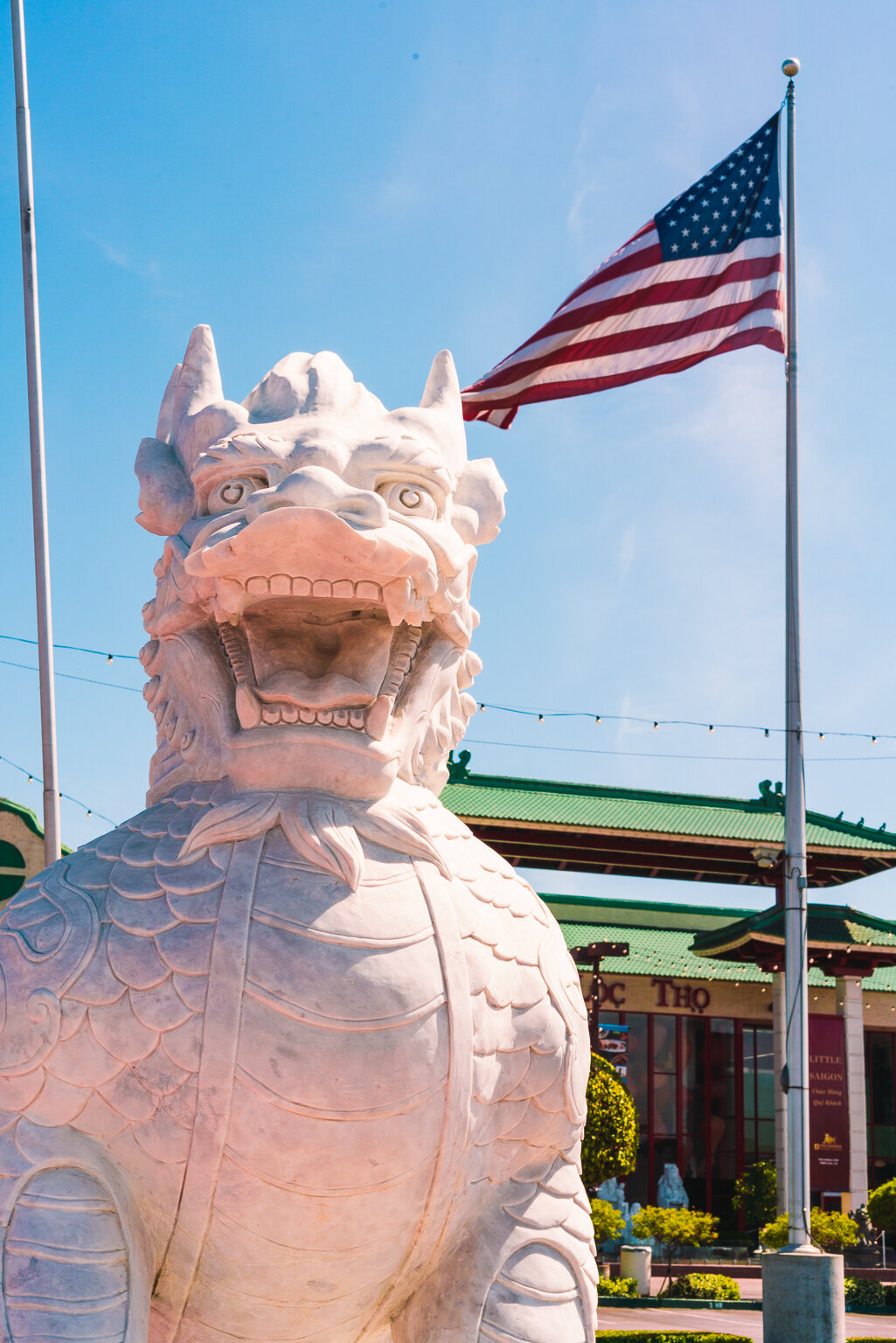Asian Americana: Intersections of Asian and American culture
This was a documentary photography project for Asian American Pacific Islander Heritage Month 2020. I went to all of the Asian enclaves in the Los Angeles area looking for things that felt like the areas where Asian and American culture blend together.
Little Tokyo
In Little Tokyo, even though the annual Children’s Day parade was canceled, they still flew Koinobori outside of the Aratani Theater. Also known as carp streamers, Koinobori, are flown on Children’s day in Japan because carp are known for being big and strong, traits parents wish for their children to have. However, in Japan, Koinobori typically don’t have American flag patterns.
Chinatown
This is actually the second Chinatown of Los Angeles. The original one was located where Union Station is now, but the residents were forced to move here so the station could be built. Interestingly, the Chinese population in the Los Angeles area has moved once again to the San Gabriel Valley. I find myself when exploring Chinatown drawn to the old shop signs and road signs. Chinese text is only able to written on road signs like this because the United States has no official language. In terms of convenience stores and drug stores, they remind me classic Americana like Happy Days and places where my friends and I would spend all of our time as teenagers.


Koreatown
Koreatown is home to the largest Korean population outside of the mainland and you can see the signs of at least two separate waves of immigration. The more recent wave is evidenced via upscale shopping centers and cafes along 6th Street and Wilshire Avenue. On the other hand, you can see signs of the original wave of immigration along Olympic Boulevard where many older businesses show how self-contained the community was in the past. Most ethnic enclaves these days have been reduced to just restaurants, but I’m fascinated that LA’s Koreatown still has many types of Korean-owned businesses, chief among them being auto-related. America’s long highways, large land mass, and the coming-of-age meaning of car ownership means that cars a huge part of American culture and likewise you can see that same appreciation for cars in Koreatown.


Thai Town
In 1999, this six square block area of East Hollywood became officially recognized as Thai Town and was thusly the first recognized ethnic enclave with this name in the United States. What caught my eye personally was this Cajun restaurant. As random as that may seem, my parents were of a generation of Southeast Asian immigrants who settled along the gulf coast. Before the Vietnam war, many countries in Southeast Asia had strong fishing economies and new refugees naturally settled there to work on fishing and shrimping vessels. In subsequent generations, their sons and daughters have exported cajun food to other states sometimes fusing it with Asian flavors. It can be seen as controversial or even a type of cultural appropriation, but I think that ties into other conversations about eternal foreigner syndrome.
Little Saigon
Little Saigon is in the Garden Grove area of Orange County and less walkable than the enclaves up to this point. As a result of that and limited time, I based my photos and thoughts on a few iconic areas. My observations were a little different here as my focus was mainly drawn to western influence on Vietnamese culture and how all of these things are seen more prominently in Vietnamese culture than perhaps any other Asian culture. Many of the influences one might think of in the old country are remnants of the French colonization where I think the Vietnamese American experience has been heavily shaped by the Vietnam war, the dynamics of the subsequent wave of immigration and the desire to assimilate.


FilipinoTown
Unlike the other enclaves on this list, Filipinotown doesn’t have many striking visual cues that scream out “Filipinotown” and is actually one of the most diverse here as I saw a variety of restaurants, churches and temples representing cultures across Asia that coalesce here in a way they don’t in the other historical Asian communities. It’s one of the most diverse neighborhoods and that diversity is one of the most American things about FilipinoTown and the culture at large. Although often unacknowledged by other Asians, Filipino Americans make up the second largest portion of Asian Americans. In fact, I’ve only just learned that The Philippines as an American colony was attacked on the same day as Pearl Harbor and the fact that it was not mentioned in Roosevelt’s speech at the time has shaped our perception of how foreign the Philippines is vs Hawaii.


Final Thoughts
Admittedly, I didn’t even know Asian American and Pacific Islander Heritage Month was a thing until 2020 and felt I needed to do a project with all of the extra time I had. Because this was deep in the middle of the pandemic, I chose to focus on places and objects. As far as subject matter I thought it was an interesting exploration because I grew up Asian American in rural Arkansas and wanted to delve into what it is to be an Asian American. We can look at a dish or building and think that looks really Asian. But would we ever look at anything and think that looks “Asian American” and I guess that’s what I was searching for those places and objects where we see that fine line where cultures coalesce.
If while reading my thoughts, you think the observation is a bit vague or just surface level, you are correct. Because of what I was looking for, I went into this fresh without studying the enclaves. I wanted to strictly process everything visually and capture those little things that stood out to me.


